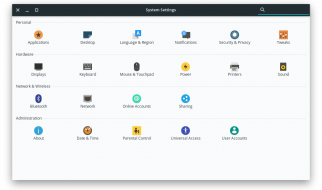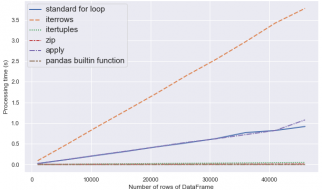
Scrum provides the agile development framework for IT organisations to thrive in a fast-paced environment, and Scrum meetings are an indispensable component of that framework that help Scrum teams carry out more efficient development and delivery of functionality.
The meetings are carefully designed to improve developer productivity and prevent impromptu meetings from impeding development and operations work.
Parameters are set around these meetings to cut down on the waste of excessive discussions that cause a need for additional meetings. For instance, Scrum meetings are time-boxed and discussions veering from the core content of a meeting aren?t allowed. This disciplined atmosphere allows Scrum teams to spend more time developing and solving problems rather than sitting in meetings all day.
There are five types of Scrum meetings held in regular intervals:
- Sprint Planning
- Daily Standup
- Sprint Review
- Sprint Retrospective
- Product Backlog Refinement
Sprint Planning
If a sprint is the working process of Agile, Sprint Planning is the beginning of that process.
This agile ceremony is held by the Development team, Scrum Master, and Product Owner. It is held with the purpose of setting up prioritised worklist and aligning the entire team for success throughout the sprint. During the meeting the Product Owner explains the user stories and all of the use cases to everyone. The team has the opportunity to ask questions about them and get rid of any confusion and get clarifications. The Product Owner discuss a prioritised backlog with the development team, and the whole group collectively comes up with the amount of effort involved. The team then decides how much of the work from the backlog can be completed in this iteration. Once effort estimation is done, user stories are assigned to individual team members and work is started. This Scrum meeting should last two hours for every week of the sprint, so a two week sprint would call for a four hour max Scrum meeting.
After the meeting, team members can still add new user story or task, if they find something within a sprint. Team members should communicate to product owner if newly found work does not seem to be original part of the plan.
Daily Standup
An agile ceremony held for the Development Team facilitated by the Scrum Master. The Product Owner and the stakeholders can participate in this meeting to answer the questions raised by the development team. This meeting takes place each day preferably at the same place, and typically held in the morning. The purpose of the Stand-up is to keep everyone on the same page.
It is significant because it brings accountability to Scrum team members. These Scrum meetings occur throughout the sprint, and every day each team member is being required to answer three questions:
- What did I do yesterday?
- What will I do today?
- Are there any impediments to continue working?
The daily stand-up should be considered an informal meeting and should be no longer than 15 minutes.
Having Scrum teams provide information on these questions helps the Scrum Master see if anything could potentially hinder progress. But it?s also an opportunity to determine more effective paths to completion.
Everyone gives a status update and says if there?s anything prohibiting them from accomplishing their commitments. If someone says they?re still working on a particular piece of functionality and that?s an impediment to someone else, we can address it.
Another benefit of the daily standup is transparency. Anyone in the organisation is welcome to sit-in and listen to everything discussed in the daily standup, although only the Scrum team can speak because time is limited.
Someone might have an interest in seeing where the Scrum team is in the sprint so they can make considerations for the future. If the Scrum team is working on something that could impact another area, it would make sense the for person(s) working in that area to be aware.
Sprint Review
An agile meeting at the end of the sprint, held by Development Team, Scrum Master and Product Owner, where the stakeholders may be invited as well. The purpose is to demo functionality and discuss with shareholders and others what was accomplished during the sprint. The format of the meetings can be casual or formal depending on the team?s preferences. The Scrum Master needs to plan this session well beforehand to make sure participation of stakeholders who can give necessary feedback on sprint demo.
After showing the work progress, the team can expect to receive feedback from the stakeholders. The feedback may vary story to story, but generally we?re hoping for a conversation to make the new functionality better. The PO and stakeholders might provide feedback on changing a feature after seeing and disapproving of the original concept. Team members might inquire about a piece of work and potentially offer more efficient alternatives.
This Scrum meeting should last one hour for each week of the sprint. For instance, a two week sprint would include a two hour sprint review.
Sprint Retrospective
An agile ceremony held after Sprint Review meeting. Participants are Scrum Master, Product Owner and Development Team. The aim of the meeting is to find out what worked well and what didn?t, in the last iteration. The team tries to find out any issue that is affecting the progress. All participants give written feedback. The team takes this session as an opportunity to improve. If there are different types of issues then the team picks the three most voted issues and discuss them to find their solution together.
The Sprint Retrospective should last around one hour. If you?re moving through a sprint retrospective in less than 45 minutes, you likely aren?t getting optimal value out of the Scrum meeting.
It is to reflect upon the recent iteration to evaluate, how the team performed and what factors caused it to lose productivity. After retrospective analysis, the team can expect to improve its processes and be on the path of growth for the future.
Product Backlog Refinement
This ceremony lasts one to two hours, depending on the Scrum team, and occurs between sprints. It gives Scrum teams a chance to:
- Evaluate a story for clarity, size and feasibility
- Learn what?s coming up in the next sprint
- Express concerns early in the process
- Make sprint planning move quicker
A Product Owner has an idea of what they expect a piece of functionality to look like at the end of each sprint. The refinement meeting exists for having a technical discussion about a user story, and ensuring the Scrum team understands the requirements and that what?s being asked is deliverable within a sprint.
You may also like these articles about Agile Development:
Agile Development: A quick overview
A quick overview to the Agile software life cycle model
medium.com
Agile development: What is a Product Owner? Roles and Responsibilities?
The Scrum Product Owner is responsible for maximising the value of the product resulting from the work of the?
medium.com
Agile Development: What is a Scrum Master? Roles and Responsibilities?
Scrum Master is known as guardian of Scrum Team, someone that resolves impediment and have control over the scrum?
medium.com
Agile Development: User stories are the new requirements document
User stories have emerged as the best and most popular form of product backlog items.
medium.com
Agile Development: What is DevOps? What are the benefits?
Cultural philosophies, practices, and tools that increases an organisation?s ability to deliver applications and?
medium.com
Via:


